A classical music journey to Great Britain
I recently came across ‘The Classical Music Map of Britain’ written by Richard Fawkes and originally published in 2010. In this book, Fawkes takes the reader on a classical music journey to Great Britain, visiting places with connections to classical music composers, both British and from abroad. The book is divided into five sections: England, London, Wales, Scotland, and Northern Ireland. Within each of these five sections, the author visits a great number of places (houses, churches, museums) in alphabetical order. This makes it rather difficult for the reader to follow in Fawkes’s footsteps. I would have personally preferred it if the journey followed a geographical, or even thematic, order instead. Despite this, however, ‘The Classical Music Map of Britain’ is still a very interesting book to read.
Inspired by ‘The Classical Music Map of Britain’, today I’m embarking on my own classical music journey to Great Britain. Since I now live in London, a city with such a rich cultural activity, this is exactly where I’m starting my journey.
Classical music in London
Wesley’s Chapel
For the last couple of years, I have been a digital nomad on Tuesdays, which has given me the time to explore London, and discover hidden gems largely unknown to residents and visitors. One of these gems is the beautiful Wesley’s Chapel. Every Tuesday afternoon at 13.05, the chapel invites a musician, and welcomes no more than a dozen passers-by, for an intimate recital. These recitals are free to attend and usually last for 45 minutes to an hour.
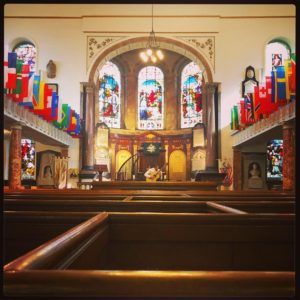
Located between Old Street and Moorgate train/tube stations, and within walking distance from the hip Shoreditch and the City of London, Wesley’s Chapel is one of the least known and most underrated London landmarks. It is a Methodist church, built in the 18th century under the direction of John Wesley, who founded the Methodist movement. This is where the infamous Prime Minister Margaret Thatcher was married, and also where her children were baptized. The first thing you‘ll notice as you enter the courtyard is the statue of Wesley. There’s also a crypt housing the Museum of Methodism, and John Wesley’s House, located right next to the chapel.
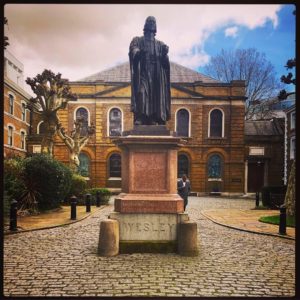
The Barbican Centre
Not far from Wesley’s Chapel, there’s the Barbican Centre. The Barbican is an arts center and home to the London Symphony Orchestra. It regularly hosts classical and contemporary music concerts, as well as theatre performances, film screenings and art exhibitions. A few months ago, I saw the Los Angeles Philharmonic Orchestra performing here.
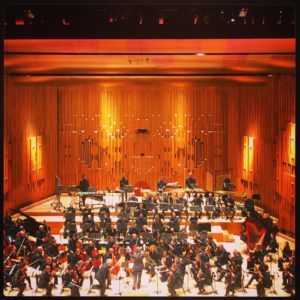
It is part of the Barbican Estate housing complex, a fine example of Brutalist architecture. The Barbican Estate also houses the Museum of London and is close to several tube and train stations (Barbican, Farringdon, Moorgate, St Paul’s).
St Martin-in-the-Fields
Located at the north-east corner of Trafalgar Square, between Leicester Square, Covent Garden and Charing Cross tube/train stations, there is the church of St Martin-in-the-Fields. This is another London church frequently hosting classical music concerts. The lunchtime ones are free to attend, whereas the evening ones are ticketed.
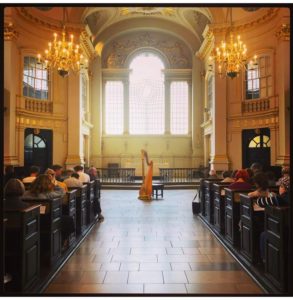
St James’s Church
Also known as St James-in-the-Fields, St James’s Church is located on Piccadilly, in central London. It is no more than a couple of minutes’ walk from Piccadilly tube station, and within walking distance from Trafalgar Square and St Martin-in-the-Fields. This historic church was designed and built by Sir Christopher Wren, renowned for many London landmarks, including St Paul’s Cathedral. St James’s Church hosts lunchtime recitals every Monday, Wednesday and Friday at 1.10 pm; these last approximately 50 minutes and are free to attend. It also hosts evening concerts.
Southbank Centre/Royal Festive Hall
Opposite the Embankment tube station, there is the Southbank Centre. Located on the south bank of the River Thames, the Southbank Centre comprises of several venues, including the Royal Festive Hall. This is a great place for music lovers; there are classical music concerts most days of the year, but it also hosts other music events, such as the EFG London Jazz Festival every November. In 2019, I saw the Icelandic composer Ólafur Arnalds performing here, whereas the previous year I’d seen Nana Mouskouri, the Greek-born biggest-selling female artist of all time. At the age of 84, she gave such an unforgettable performance! More recently, I saw the Bergen Philharmonic Orchestra performing the opera ‘Peter Grimes’, by the British composer Benjamin Britten.
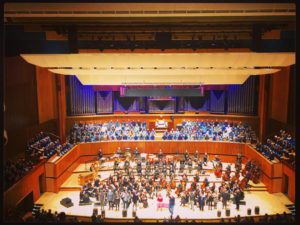
Wigmore Hall
The Wigmore Hall is another concert hall in central London (in Marylebone, near Bond Street tube station). It hosts regular classical music concerts and recitals, and is particularly renowned for the chamber music concerts.
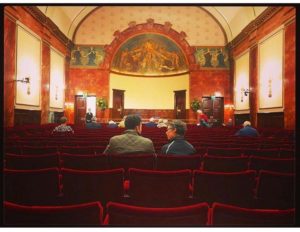
Handel & Hendrix
Not far from Bond Street tube station, there’s the Handel House and the Hendrix Flat. Situated in Mayfair, this is where German composer George Frideric Handel moved in in 1723. This is also where the American singer-songwriter Jimi Hendrix lived over 200 years later and shortly before his untimely death.
The Musical Museum
Closer to where I currently live, there’s the Musical Museum in Brentford, near Kew Bridge. At first, I had wrongly assumed that this would be a museum about musicals. So, when I visited, I was surprised to discover that it was actually about musical instruments, including self-playing ones. The museum is open on Tuesdays, Fridays, Saturdays and Sundays, and the exhibition is viewed by guided tour only (£11). There are also special events held here, such as concerts and film screenings.
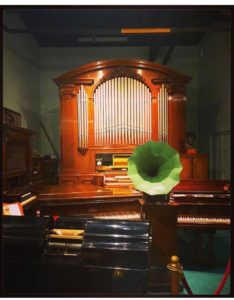
Classical music festivals
Hastings International Piano Festival
Hastings International Piano Festival is due from 26 February to 8 March 2020 and will be headlined by Rufus Wainwright and the Royal Philharmonic Orchestra, performing on the 28th of February. It takes place in Hastings, a seaside town in Sussex, on the southeast coast of England, and about an hour and a half from London (on the train).
Barnes Musical Festival
Barnes Musical Festival takes place every year in Barnes, in Southwest London. This year, it is due from the 7th to the 22nd of March. Each year there is a different theme, and in 2020, the theme is “Musical Journeys – a Voyage of Discoveries”. According to the official festival website, “the festival has expanded to include thirty-five events at ten venues across Barnes with over nine hundred musicians taking part. The music spans orchestral, instrumental, choral, opera, jazz and film with performances from internationally renowned artists, emerging young talents and local groups as well as the involvement of all the schools in Barnes and further afield.” Most of the concerts take place at St Mary’s Church in Barnes.
The Proms
The Proms is a series of summer concerts, of (mostly) classical music; they are held daily over an eight-week period across quite a few venues, including the Royal Albert Hall. This year, the Proms take place between the 17th of July and the 12th of September.
British composers
British popular music has been hugely influential and trendsetting since the middle of the 20th century. The Beatles and the Rolling Stones are only the first names that spring to my mind when I think of the ‘British Invasion’ of the global music scene that started in the 1960s, and continues to the present day with Adele, Ed Sheeran and many more talented musicians.
But Great Britain also has a rich tradition in classical music. The country is the birthplace of several famous composers, such as William Byrd, Henry Purcell, Hubert Parry, Ralph Vaughan Williams, Gustav Holst, and Benjamin Britten, renowned for ‘Peter Grimes’ and the ‘War Requiem’.
My personal favorite is Sir Edward Elgar. This perhaps has something to do with the fact that I lived in Worcester in my first year in the UK; the house where I lived was two miles from the Firs, Elgar’s birthplace, in the village of Lower Broadheath. Set in sight of the composer’s beloved Malvern Hills, the Firs is open daily from 10.00 to 17.00 (£8). Malvern, where Elgar lived and composed many of his works, is not far from there. Neither is Marl Bank, a large house set on a bank to the east of Worcester city center with a good view of the cathedral. This is where Elgar spent his final years.
Another notable English composer is Frederick Delius who was born in Bradford, in Yorkshire, where I also lived for a few years. His parents were Germans, and Delius spent part of his life abroad, in Florida, Germany and then in France.
Further reading
If you’ve enjoyed this post, check out my musical journey around Europe.
Alex
(the Traveling Psychiatrist)